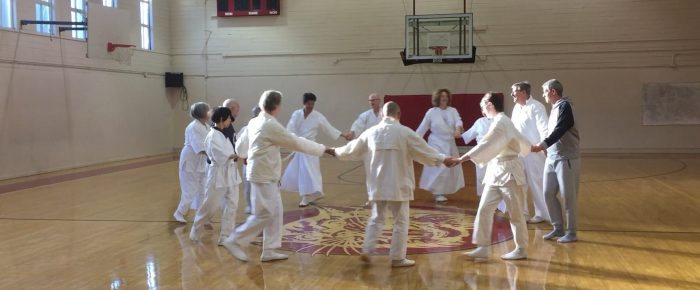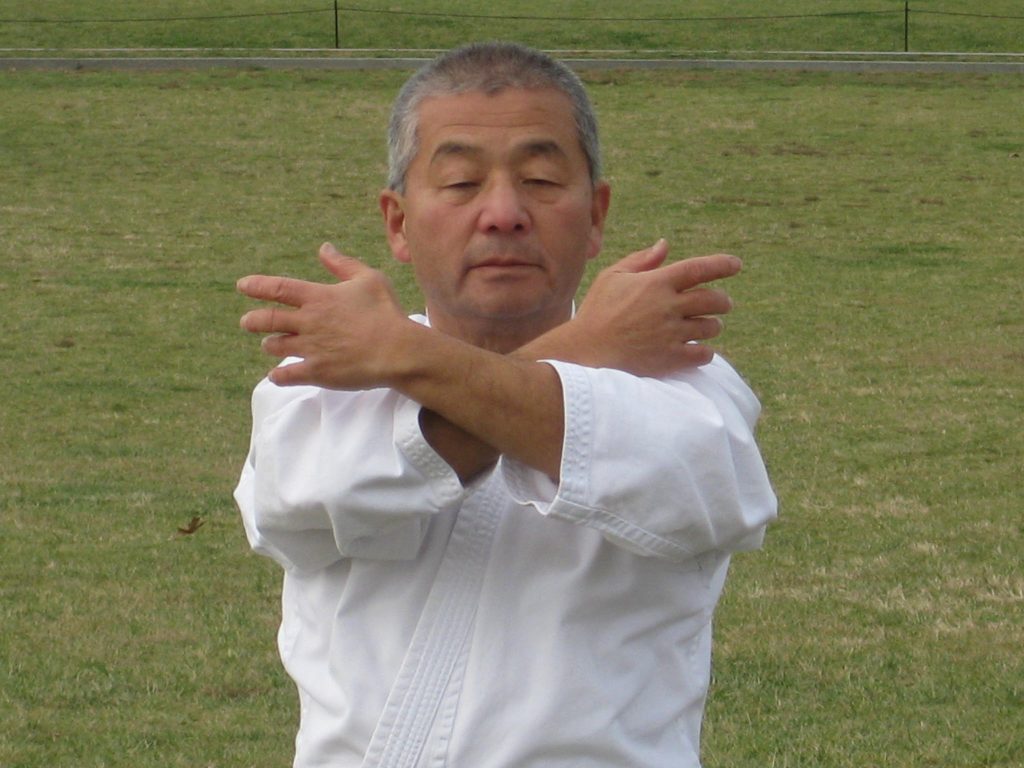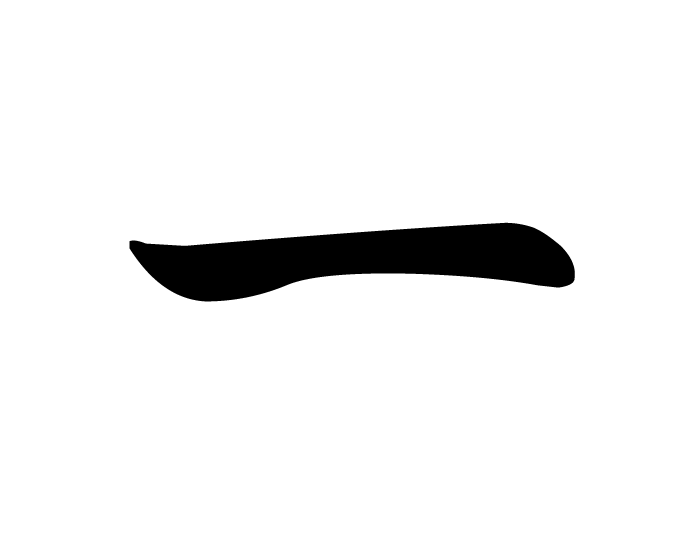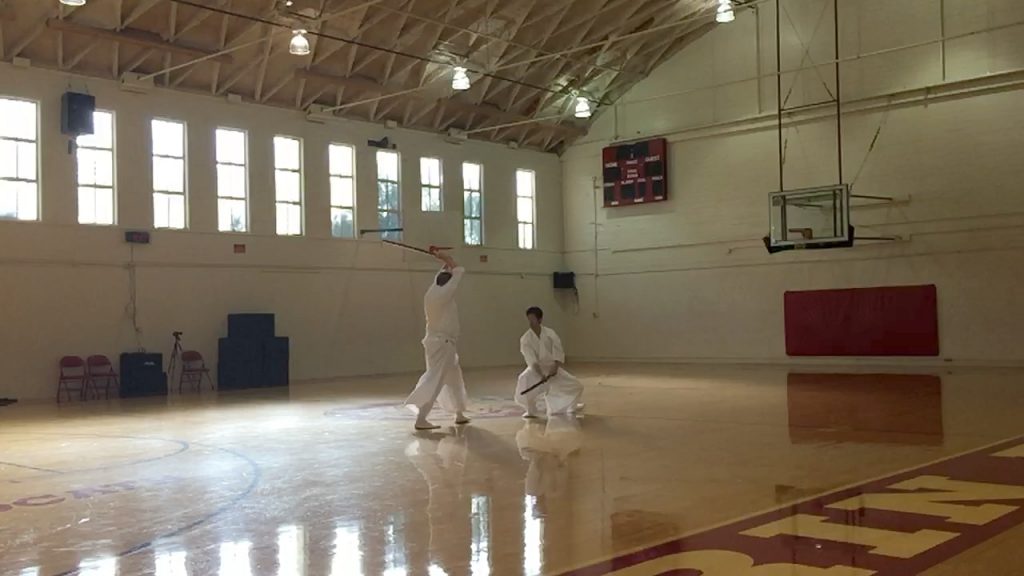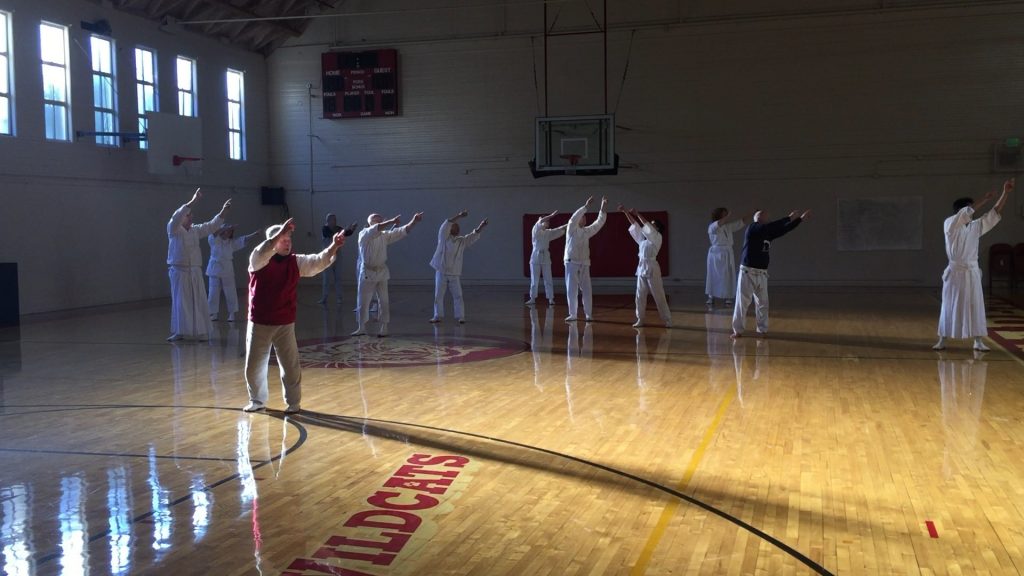Shintaido Québec Septembre 2019
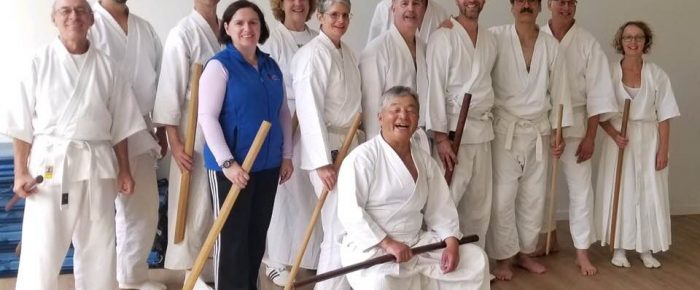
Par Dan Raddock et Mark Bannon
En septembre dernier (2019), Ito, Maître Instructeur et Shintaido Québec ont accueilli une classe de Maître Shintaido Kenjutsu suivie d’un atelier à de Shintaido mains ouvertes, comprenant des examens pour Shintaido Graduate et Shintaido Kenjutsu Shodan. Voici quelques notes et souvenirs à partager.
La formation de master-class du vendredi comprenait plusieurs variantes de Diamond Eight Cut (mains ouvertes, avec épée), Shoden no kata, Chuden no kata pour les étudiants avancés, et une simulation d’examen.
L’atelier du samedi s’est ouvert avec un jumbi taiso (échauffement) dirigé par Mark Bannon. L’échauffement a été suivi d’une discussion de groupe sur l’importance de la structure de jo-ha-kyu dans le taiso de jumbi et le keiko lui-même. Jo-ha-kyu est un rythme qui commence lentement, en s’appuyant sur lui-même, jusqu’à un crescendo. Le rythme permet au groupe de suivre plus facilement, de rester engagé et de s’unir.
Plus tard, Maître Ito nous rappellera à nouveau le rôle important et la responsabilité du chef de l’exercice « échauffement », non seulement en accueillant des camarades de classe et en les préparant physiquement pour le keiko, mais en étant constamment éveillés à l’état de chaque membre de la classe, comme celle d’un Goreisha se préparant à enseigner. Pleine conscience de l’environnement.
Maître Ito a ensuite dirigé Eiko Dai pour redécouvrir l’importance du fondamentale de cette pratique dans le Shintaido en général, et plus particulièrement, en soulignant la séquence Tenso to Shoko d’Eiko Dai qui apparaît dans Tenshingoso, Diamond Eight Cut, Taimyo, Kiri-oroshi Kumite, etc.
Hervé et Mark ont ensuite pratiqué Kiri Oroshi Kumite en examen simulé devant le groupe avec l’accent sur Tenso à Shoko, séquence de coupe en mouvement dans kiri-oroshi kumite. Un accent particulier a été mis sur l’invitation du partenaire, afin de créer le lever ensemble de Tenso, qui se transforme dans sa suite en Shoko (ensemble) – prenant soin du partenaire dans sa vulnérabilité dans la coupe kiri-oroshi (coupe profonde). Le mouvement devait progresser en créant l’alternance des rôles en dynamique (continuum).
Un autre thème important de l’atelier était Musoken, état physique qui permet l’appréhension de l’invisible de l’attaque. Maître Ito a introduit une série d’exercices à main vide, puis à l’épée, en nous invitant à explorer Musoken.
Fidèle au rythme Jo-ha-kyu, nous avons commencé lentement avec wakame taiso par derrière. Nous avons ensuite élargi l’impression avec la dynamique de quelqu’un poussant un panier (tsuki à deux mains) lentement vers vous par derrière. Comme crescendo, nous avons répondu à un Shintaido karaté-tsuki, puis la coupe d’une épée / afin d’éveliier la snesation de derrière. Maître Ito a souligné l’importance d’utiliser tous ses sens pour « sentir » l’attaque. Et, même si vous êtes incapable de réagir à temps, maintenez toujours (ten-chi-jin) la droiture de la posture, de sa conscience pour rester dans l’instant.
Le dernier jour de l’atelier comprenait plus de pratique de Musoken en utilisant bokken et la pratique jumelée de mouvements kumite épée de shoden no kata – trois attaques de jodan tout en attaquant, trois coupes gedan tout en reculant, puis changer de rôle pour créer kumite continue. L’atelier a été suivi par des examens gradués Shintaido pour Herve’ et Mark, et des examens Kenjutsu Shodan pour Dany, Bruno, Gail, Dan et Sarah.
Trois leçons / discours impromptus, de Maître Instructeur Ito ont été parmi les nombreux moments forts du rassemblement québécois. Ces discours spontanés étaient pleins de sens, de métaphore et d’histoire. Chacune de ces discussions explore les significations plus profondes qui sous-tendent les techniques fondamentales de Shintaido. Ils révèlent les racines des techniques, ainsi que l’esprit/ voie qui transcende la technique.
Les discussions ont portées sur les sujets suivants :
- Le sens des symboles du « dojo » et du sacré de l’espace, la création d’un espace sacré et comment ces concepts s’intègre au jumbi taiso en début de keiko
- Le sens de Musoken – percevant l’invisible – l’importance dans le chemin à cultiver cette sensibilité
- Le chemin menant de Odachi Zanshin, position de base du karaté-do à Tenso/Shoko et de Tsuki à Shoko; quant à l’adoption du divin dans l’incorporation de son humanité; et le sens et l’importance de (Daijodan) Kiri Oroshi Kumite.
La fin de semaine s’est terminée par une célébration de la vie à la mémoire de la Shintaidoiste montréalaise Anne-Marie Grandtner qui s’est tenue au Parc Victoria par un lundi matin ensoleillé et lumineux.
Un merci spécial aussi à Carole et Herve’ pour leur hospitalité à faire de l’atelier québécois un événement chaleureux et accueillant.

